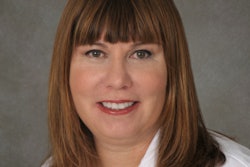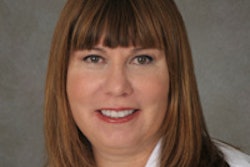
A cellphone lost; gone since when? Last used earlier in the morning ... where had it gone?
My husband, a farsighted, intelligent man, looked and looked everywhere he had been and anywhere it might have fallen. Unhappy about the loss, he was determined to look long and hard to recover it. He believes I have x-ray vision and, sure that it would work its usual magic, he entreated me to look with him.
I, more skeptical, thought it a waste of time. Reluctantly, I relented and followed in his footsteps to try and find it. I am shortsighted and even with glasses can't see very well in the distance. Yet I am a trained radiologist with years of reading cases. He was sure that my systematic approach to looking for radiographic findings would allow me to find what he could not.
We scoured the grocery store parking lot, asked at customer service, and did all the things one should do to try and retrieve a hopelessly lost phone. The next stop was the post office lot, which was empty because it was Sunday. I scanned the lot, looking for a black phone ... on black asphalt. A flat black rectangle, hard to see and only possibly there.
 Dr. Mary Morrison Saltz.
Dr. Mary Morrison Saltz.
I deliberately looked across the parking lot in the fashion I would use to look for a finding on a case: first a glace across the ground, then deliberately looking back and forth, up and down, to capture the abnormality, however subtle, and distinguish it from the background noise.
Much as one looks for the 2-mm nodule at a lung base, described on the last report but not immediately seen, I scanned the asphalt, back and forth. No phone.
Almost defeated, I asked, where did you park? Where did you stand? Retrace your steps. I began to search the road itself, a last-ditch effort. Cars were passing by at some speed, and there, on the road, was the outline of a small rectangular object, distinguished by a shiny exterior, a different texture, a subtle finding -- indeed, hidden in plain view. Smashed beyond usefulness into the pavement was the missing phone.
How does one search for a finding, almost imperceptible, yet there and once seen, almost obvious? Many studies have looked at a radiologist's eye motions, which seem to be unpredictable and not easily characterized. Yet the mature radiologist has been shown for some time to look differently at an image than a novice.1
I do believe we look at images differently when we have experience and can often recognize important abnormalities at a glance, yet I feel we must also systematically target our search to overcome perception bias. We must see it all but perceive and recognize the key findings -- all of them!
We all know about the "Instant Happiness Syndrome": When we find the obvious abnormality, we stop looking for more. Yet when one looks for this in Google Scholar, there is only one reference cited.2 We don't have all that much insight into how we perceive images, despite looking at thousands a day.
Understanding how radiologists detect and interpret images is complex and key to training new radiologists, improving our own performance, and learning how best to integrate computer-aided diagnosis into our diagnostic armamentarium. Given a case with thousands of images, we cannot look carefully at every pixel, yet we are tasked with finding every significant finding. How can we do this if we can't even find the gorilla in the picture?3 How do we actually do it?
That seems to depend on our level of training, experience, and subject-matter expertise. Thinking about how we recognize an "Aunt Minnie" or how we "gestalt" a case is fascinating and, indeed, a real phenomenon!
"Gestalt theory: Implications for radiology education," by Koontz and Gunderman,4 is a thought-provoking must-read for all of us! The authors' integration of art, radiology, gestalt theory, and our lives as physicians begins to explain how we "see." Examples of how and why we perceive images suggest that features such as the similarity and proximity of objects change our perception of relationships and make some things easier to see than others.
Koontz and Gunderman suggest that this explains why it's harder to see pulmonary nodules in the lung fields: It's because we are distracted by the heart shadow -- bright and bold in the center. On some level I think we know this, almost instinctively, after years of plying our profession.
How do I look at a case? I think I first "gestalt" it, then go back and do a targeted search, looking carefully for the findings I expect to see. That is where the old reports are crucial: If someone saw something last time, I will be sure to look especially hard to see it again. The history is key! If I know the patient has right lower quadrant pain, fever, and an elevated white count, I will certainly make sure the appendix is normal! And then I will look again, just to be sure.
Does experience help? It seems so. It seems that novice radiologists' eyes search haphazardly for findings, while more experienced radiologists exhibit more concise eye movements, finding pertinent abnormalities faster.5 Yet it has been demonstrated that, as a profession, we are no better than others at finding Waldo.6 I can't argue with science -- but I'd like to think we are more skilled.
It seems that despite our ability to perceive abnormalities in a flash on cases, and to find more abnormalities than nonradiologists, we still don't really know why. We don't know how we do it, or why we make mistakes. Distractions, poor working conditions, poor technique, fatigue, lack of training, and lack of knowledge may be invoked7,8; yet errors in perception are real and also not well-understood. How can we teach our residents what we do not ourselves understand? How can we perform better if we don't understand our process? How can we make sure we always see the gorilla in the CT?
Do you think we have x-ray vision? Or was I just lucky to find that cellphone?
References
- Kundel HL, La Follette PS. Visual search patterns and experience with radiological images. Radiology. 1972;103(3):523-528.
- Google Scholar. http://scholar.google.com/scholar?q=radiology+%22instant+happiness+syndrome%22&btnG=&hl=en&as_sdt=0%2C33. Accessed September 23, 2013.
- Spiegel A. Why even radiologists can miss a gorilla hiding in plain sight. NPR. http://www.npr.org/blogs/health/2013/02/11/171409656/why-even-radiologists-can-miss-a-gorilla-hiding-in-plain-sight. Published February 11, 2013. Accessed September 23, 2013.
- Koontz NA, Gunderman RB. Gestalt theory: Implications for radiology education. Am J Roentgenol. 2008;190(5):1156-1160.
- Drew T, Evans K, Võ ML, Jacobson FL, Wolfe JM. Informatics in radiology: What can you see in a single glance and how might this guide visual search in medical images? RadioGraphics. 2013;33(1):263-274.
- Nodine CF, Krupinski EA. Perceptual skill, radiology expertise, and visual test performance with NINA and WALDO. Acad Radiol. 1998;5(9):603-612
- Lee CS, Nagy, PG, Weaver SJ, Newman-Toker DE. Cognitive and system factors contributing to diagnostic errors in radiology. Am J Roentgenol. 2013;201(3):611-617.
- Pinto A, Brunese L. Spectrum of diagnostic errors in radiology. World J Radiol. 2010;2(10):377-383.
Dr. Mary Morrison Saltz is a board-certified diagnostic radiologist. She is currently chief clinical integration officer for community practice initiatives at Stony Brook Medicine and a member of their department of radiology. She is also CEO of Imagine Image Innovation, a company that uses big data to improve delivery of radiology services.
She has also served as chief medical officer for Hospital Radiology Partners and as radiology chair and service chief at hospitals in Florida, Ohio, and Georgia. Dr. Saltz is a member of the American College of Physician Executives, the American College of Radiology, and RSNA, and she sits on the Citizens Advisory Council of the Duke Cancer Institute.
A hands-on leader, Dr. Saltz's expertise is working hand-in-hand with hospital administration to guide radiology teams to success. Dr. Saltz has led quality assurance programs in Florida and Ohio and she served as chief quality officer for community practice initiatives at Emory Healthcare. She also has more than 20 years of private-practice experience.
She is a graduate of McGill University, with a Bachelor of Science in Human Genetics, and Duke University, where she obtained her Doctor of Medicine. Her postgraduate education included a residency at Boston University, where she served as chief resident, and a fellowship in interventional abdominal radiology at Massachusetts General Hospital.
The comments and observations expressed herein do not necessarily reflect the opinions of AuntMinnie.com.



















